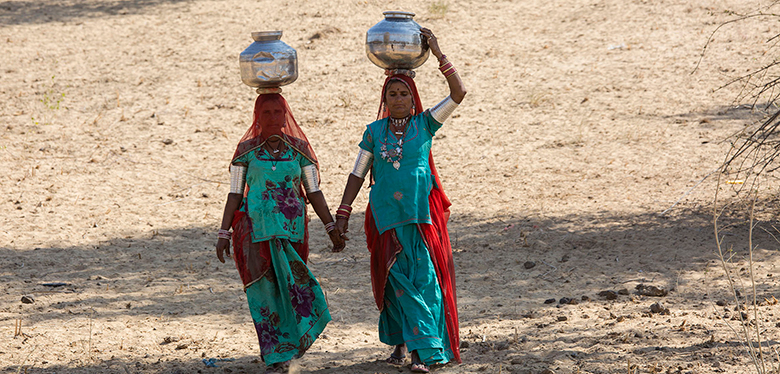
A Gender-responsive Approach to Participatory Action Systems Research
The Challenge
The social and environmental costs of poor management of common property resources are varied. Located in the extreme north-west of India, the state of Rajasthan is a hot arid region with scanty rainfall. Thar desert spreads over an area of 320,000 square kilometers and covers 60% of the state. The region faces water scarcity for up to 11 months a year and droughts occur once every 2.5 years.
Common property resources such as grazing pastures are the lifeline for rural dryland communities because they provide fodder, fuel, timber, water and medicinal plants. While livestock depend heavily on common pasture lands for feed, most lands are severely degraded due to over-grazing, over extraction and lack of effective mechanisms for sustainable resource management. Moreover, increased grazing pressure has led to the disappearance of many species and a decline in biomass.
Rural dryland communities in this area are extremely poor and marginalized. With very little opportunity to make a living in their village, men are forced to migrate and look for jobs elsewhere in the urban areas, while women and children are left behind, struggling to survive in a harsh environment characterized by lack of water, food and constant threat of droughts or flash floods.
The women cite lack of water and food for their children, elderly and livestock to be one of the biggest challenges they face. The costs of securing water and food for their families and animals are significant, but the social costs are even higher. Families are forced to live apart due to economic hardship, and children are often left on their own and unsupervised by adults.
Read the full news on the CGIAR Research Program on Dryland Systems' website
